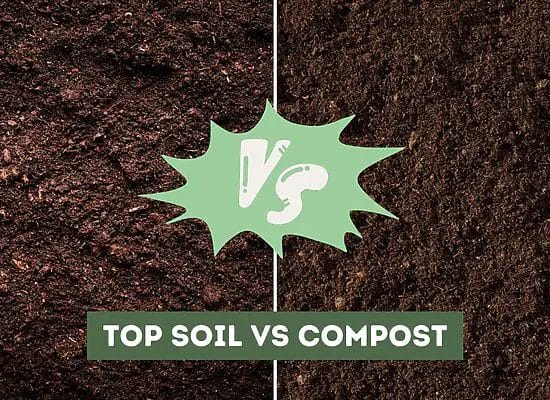
Snake plants, also known as Sansevieria, are popular indoor plants known for their hardiness and ability to thrive in various environments. One common question among snake plant enthusiasts is whether they prefer humidity or not. Understanding the optimal humidity level for snake plants is crucial for providing the best conditions for their growth. But do snake plants like humidity?
Generally, snake plants prefer a humidity level of around 40%, which is within the normal range for most indoor settings. Though these plants are tough and can survive in a variety of conditions, it is essential to maintain suitable humidity levels to ensure their health and development.
In the next sections, we will discuss how humidity impacts snake plants and what you can do to maintain the ideal environment for their growth.
Key takeaways:
- Snake plants, or Sansevieria, are low-maintenance houseplants that can tolerate various conditions.
- They prefer a humidity level of around 40%, which is within the normal range for most indoor settings.
- Ideal humidity levels for snake plants are between 30% and 60%; they can survive outside this range but may experience stress.
- High humidity can lead to leaf spot and pest infestations, while low humidity may hinder growth and overall health.
- To increase humidity, use a humidifier, place the plant on a pebble tray, mist the plant, or group plants together.
- To reduce humidity, use a dehumidifier, increase air circulation, adjust watering schedule, or improve soil drainage.
- Monitor humidity levels with a digital hygrometer to ensure optimal conditions for snake plant growth.
Understanding Snake Plants
Snake plants, also known as Sansevieria or Mother-in-Law’s Tongue, are popular houseplants known for their low-maintenance nature and attractive, upright leaves. They are native to West Africa and thrive in a variety of indoor environments. This section will cover the different types of snake plants and provide an overview of their basic care requirements.
Types of Snake Plants
There are several types of snake plants that vary in size, leaf shape, and color. Some common varieties include:
- Sansevieria trifasciata – Is the most common variety, featuring tall, green leaves with a yellow border.
- Sansevieria cylindrica – Also known as the cylindrical snake plant, this variety has round, spear-like leaves.
- Sansevieria zeylanica – This type has long, pointed leaves with a lighter green color and horizontal bands.
- Sansevieria hahnii – Commonly called the bird’s nest snake plant, it features a rosette of shorter, green leaves with yellow edges.
Each variety has similar care requirements, making them suitable for a range of indoor settings.
Basic Plant Care
Snake plants are known for their ability to tolerate various conditions, making them ideal for beginner plant enthusiasts or those with a busy schedule. Below are some general care guidelines for snake plants:
| Light | Snake plants prefer bright, indirect light but can also tolerate low light conditions. |
|---|---|
| Water | Allow the soil to dry between waterings, as overwatering can cause root rot. |
| Soil | Use well-draining soil, such as a mix of potting soil, perlite, and sand to prevent excess moisture. |
| Temperature | They prefer temperatures between 70 – 90°F (21 – 32°C) and can tolerate cooler temperatures down to 50°F (10°C). |
| Humidity | Although snake plants can survive in various humidity levels, they prefer a range of 40-50% humidity for optimal growth. |
| Fertilizer | Apply a balanced, liquid houseplant fertilizer diluted to half strength every 4-6 weeks during the growing season. |
By following these basic care guidelines, you can ensure that your snake plant thrives and remains healthy.
Humidity and Snake Plants
This topic explores the relationship between humidity levels and snake plants, shedding light on the ideal moisture conditions for these resilient plants to thrive. Learn below how to strike the perfect balance in humidity to ensure your snake plant’s lush and healthy growth.
Do Snake Plants Absorb Humidity?
Snake plants are not particularly known for their ability to absorb humidity. However, they can adapt to a range of humidity levels, making them suitable for indoor environments.
Ideal Humidity Levels
Snake plants prefer a 30% and 60% relative humidity range. Most homes or living spaces maintain around 40% humidity on average, which is suitable for the plant to thrive.
Effects of High Humidity
Although snake plants can tolerate high humidity levels, it is not ideal for their growth. High humidity can lead to leaf spot and pest infestations. To avoid these issues, ensure your snake plant has proper drainage and avoid consistently exposing it to excessively high humidity.
Effects of Low Humidity
On the other hand, low humidity can also negatively impact snake plants. When humidity levels fall below 30%, the plant may struggle to grow and maintain its health. In such cases, consider using a humidifier or other methods to increase the humidity around the plant.
Providing Appropriate Humidity to Snake Plants
Snake plants thrive in a humidity range between 30% and 60% relative humidity, with an ideal level of 40% to 60% for optimal growth. To provide your snake plant with the best humidity conditions, you can take steps to increase or decrease humidity depending on your room environment.
Increasing Humidity
If the humidity in the room is below the ideal range for snake plants, you can try the following:
- Using a humidifier;
- Placing the plant on a pebble tray;
- Misting the plant regularly;
- Grouping plants together to create a microclimate.
These methods will help raise the humidity around the snake plant and provide a more comfortable environment for it to grow.
Reducing Humidity
On the other hand, if the humidity is too high, you can try the following:
- Using a dehumidifier;
- Increasing air circulation with fans or open windows;
- Adjusting your watering schedule to avoid overwatering;
- Choosing the right soil mix to improve drainage.
These strategies will help lower the humidity levels and prevent issues such as root rot and fungal infections that can occur in high humidity conditions.
Monitoring Humidity
It’s essential to periodically check the humidity levels around your snake plant. Using a digital hygrometer is an effective way to measure relative humidity. By keeping an eye on the humidity levels, you can ensure that your plant is receiving the appropriate amount of moisture for healthy growth.
Common Problems and Solutions
In this section, we delve into the common humidity problems that snake plant owners may encounter and provide practical solutions to help you overcome these challenges.
Signs of Humidity Stress
Snake plants are generally resilient to a variety of humidity levels but might still encounter issues if the humidity is either too high or too low. Two key signs to watch for when determining if your snake plant is suffering from humidity stress are:
- Slow growth: High humidity levels can result in slow growth for your snake plant.
- Mushy leaves: Excessively high humidity might cause mushy leaves in snake plants.
Prevention and Treatment
To prevent humidity stress in your snake plant, consider the following measures:
- Manage watering carefully: Overwatering can cause root rot, especially in humid conditions. Avoid letting the plant sit in water.
- Provide adequate airflow: Ensure proper air circulation around your snake plant to help regulate humidity levels.
If your snake plant is already experiencing humidity stress, you can take the following steps to treat the problem:
- Modify its environment: Move the plant to an area with more suitable humidity and temperature conditions.
- Revise your watering schedule: Reduce the frequency of watering to avoid further complications caused by excess moisture.
- Prune affected leaves: Remove any mushy or damaged leaves to try and stimulate new, healthy growth.
Conclusion
Snake plants, also known as Sansevieria, are popular houseplants due to their low maintenance requirements and ability to tolerate a range of environmental conditions. In terms of humidity, snake plants prefer a moderate level, with the optimal range being 30-50% relative humidity.
It is important to maintain a balance in humidity level, as constant levels above 60% or below 30% can cause stress to the plant. This can lead to issues such as yellowing leaves, rot, or stunted growth.
By maintaining optimal humidity conditions, you can ensure the health and longevity of your snake plant, allowing it to thrive in your indoor environment.












